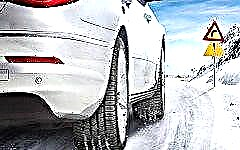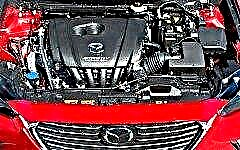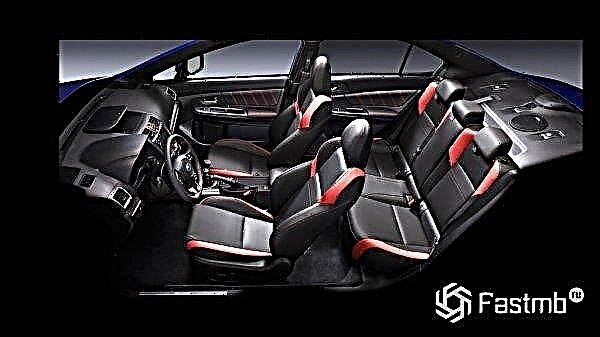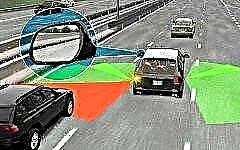If you feel the steering wheel beating at speeds between 70 and 110 km / h or when braking, then it's time to check your vehicle.

He hits the steering wheel at speed or when braking - and you understand - that's it, it's time to brake. It is difficult to describe your feelings that arise when driving a car (no matter what brand - whether it is a domestic VAZ or a foreign car), when your steering wheel begins to twitch intensively and completely uncontrollably in your hands, and most importantly, the steering wheel of your car begins to twitch so suddenly and at the wrong time. I'll tell you a case from my practice. I have a GOLF 2 1.6D car. Not so long ago, my steering wheel began to beat at speeds from 70 to 110 km / h, at a lower speed I did not beat it, and if the road came across in the form of a washboard, the steering wheel generally tried (and sometimes even pulled) out of my hands.
The simplest solution would be to send the car to the service station - let the mechanics deal with this. But no one will give you any guarantee that they will do it very quickly and at the same time they will not rip off three skins from you for repairs - replacing your steering control completely, without trying to figure out the causes of your problem. Or by replacing each of the components below in turn and ensuring that everything is in order with the car after that. That will take away from you a lot of effort and money, as well as a lot of time.
There can be quite a few reasons leading to the steering wheel beating at speed or when braking:
- imbalance of wheels;
- uneven and strong wear of the front wheel brake pads;
- steering rods;
- steering rack;
- spherical bearing;
- cardan transmission.
For this reason, I followed the path of the least financial and time expenditure - first of all, I checked what could be verified without resorting to the use of complex and expensive equipment. Here is a list of 6 reasons why the steering wheel beats, as well as methods for solving them:
Wheel imbalance

First of all, I checked the presence of balancing weights on each wheel - they were all in place, but I can assure you that this is not a one hundred percent guarantee that the wheels are not unbalanced. This can be found out only on special stands or devices. So I postponed further testing at the stand for a later time (since it requires money and equipment).
Front wheel brake pads

Then came the turn of checking another of the most common reasons for steering wheel beating at speed - the wear of the front brake pads. The main symptom of pad wear is steering wheel beating when braking. To do this, I jacked up the car and removed the front wheels one by one. Wear, of course, was, but not great. He simply could not cause such a beating.
Steering rods

Further, what most often leads to steering wheel beating is wear of tips and development on steering rods. I checked the steering rods - there is no shat in them. In order to check this, he asked his wife to hold the steering wheel firmly in one position, and having jacked up the car in turn pulled the steering rods, while there should be no free wheeling. If there is a free wheeling or the steering rod dangles, then this may be the cause of the steering wheel beating, or the rupture of the steering rod while driving and the complete loss of vehicle control at speed, respectively. This rod must be replaced. It should also be remembered that after replacing the steering rods, it is necessary to make the wheel alignment.
Steering rack

Also, severe wear of the steering rack can lead to a beating of the steering wheel at speed. With its wear, the free play of the steering wheel also increases. To eliminate this malfunction, I tightened the steering rack pressure adjusting bolt. I tightened the bolt until the steering wheel itself does not return to the "zero" position during movement, after making a turn, and then released the bolt to one edge. The beating has decreased slightly, but still remains. Thus, I found out that the partial runout of the steering wheel gave a clearance on the steering rack.
Spherical bearing

After that I checked the wheel shaft on the ball joint - there was no wheel. To check the shaft in the ball joint, it is necessary to jack up the machine and put the ball joint on a static support standing on the ground, so that the wheel is completely in the air (you can take a steel cylinder, a piece of wood, or a hydraulic jack as a support). Then take the upper part of the wheel with one hand, and the lower part of the wheel with the other hand and try to shake the wheel by pulling the upper and lower parts of the wheel in turn towards you and away from you, respectively. If a shank is present, then there is wear on the ball joint and must be replaced.
Imbalance of wheels No. 2
The moment came when my knowledge, which did not require investment of funds, of the steering mechanism ended, I had to go to the tire fitting and balance the wheels - the result is the same - the beating did not disappear.
The last reason is cardan transmission

The time has come to search for information on the Internet and using folk methods - I began to ask auto mechanics and all my friends who have cars and had problems with the steering, what it can be and how to deal with it. There were many assumptions, and completely remove the steering - then see what was there - but it would take a long time and would lead to large temporary losses. Once one of my acquaintances recommended that I look at the small cardan transmission, which is in the steering column. It is quite easy to carry out the inspection procedure, for this you need to remove the lower cover of the steering column and lower it down to the bend, where the steering column enters the body of the car, there is the cardan transmission. Having tugged it, I found a light shat. After that, I took off the cardan transmission and, having disassembled it, found a working there, which, as it turned out, created such a beating at speed. After replacing the cardan transmission, the beating went away - now the ride has become comfortable.











